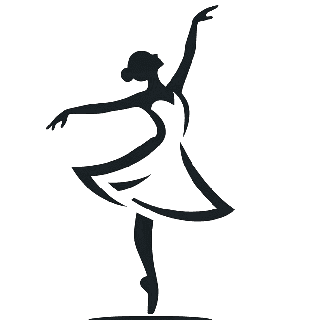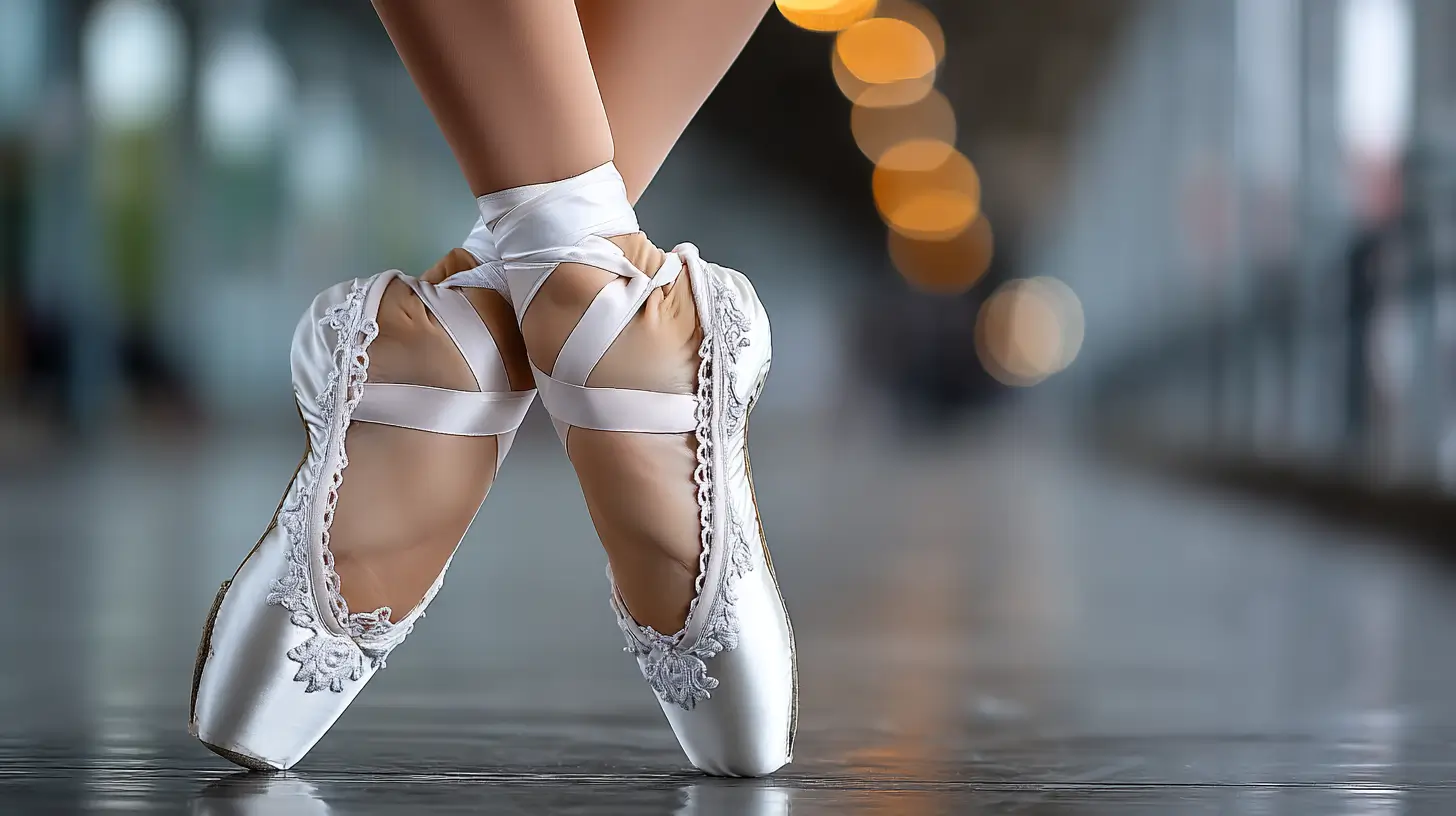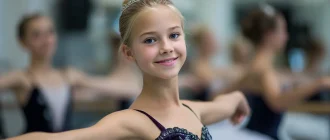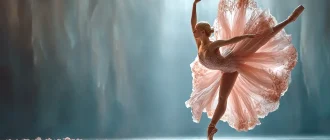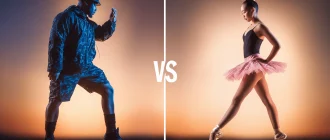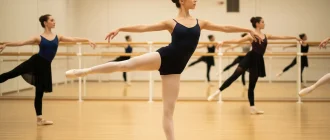Discover key ballet terminology for every dancer. Learn basic positions, movements, and advanced techniques.
Key Takeaways
- Ballet consists of essential positions, movements, and techniques, such as pliés, adagio, and allégro, forming the foundation for training and performance.
- Mastery of specific movements, such as pirouettes, sautés, and battements, requires rigorous practice and a focus on balance, control, and fluidity.
- Understanding classical ballet terminology and roles, such as corps de ballet and coryphée, is crucial for dancers to navigate the structure and artistry of ballet effectively.
Art de Podcast
The Basic Positions of Ballet
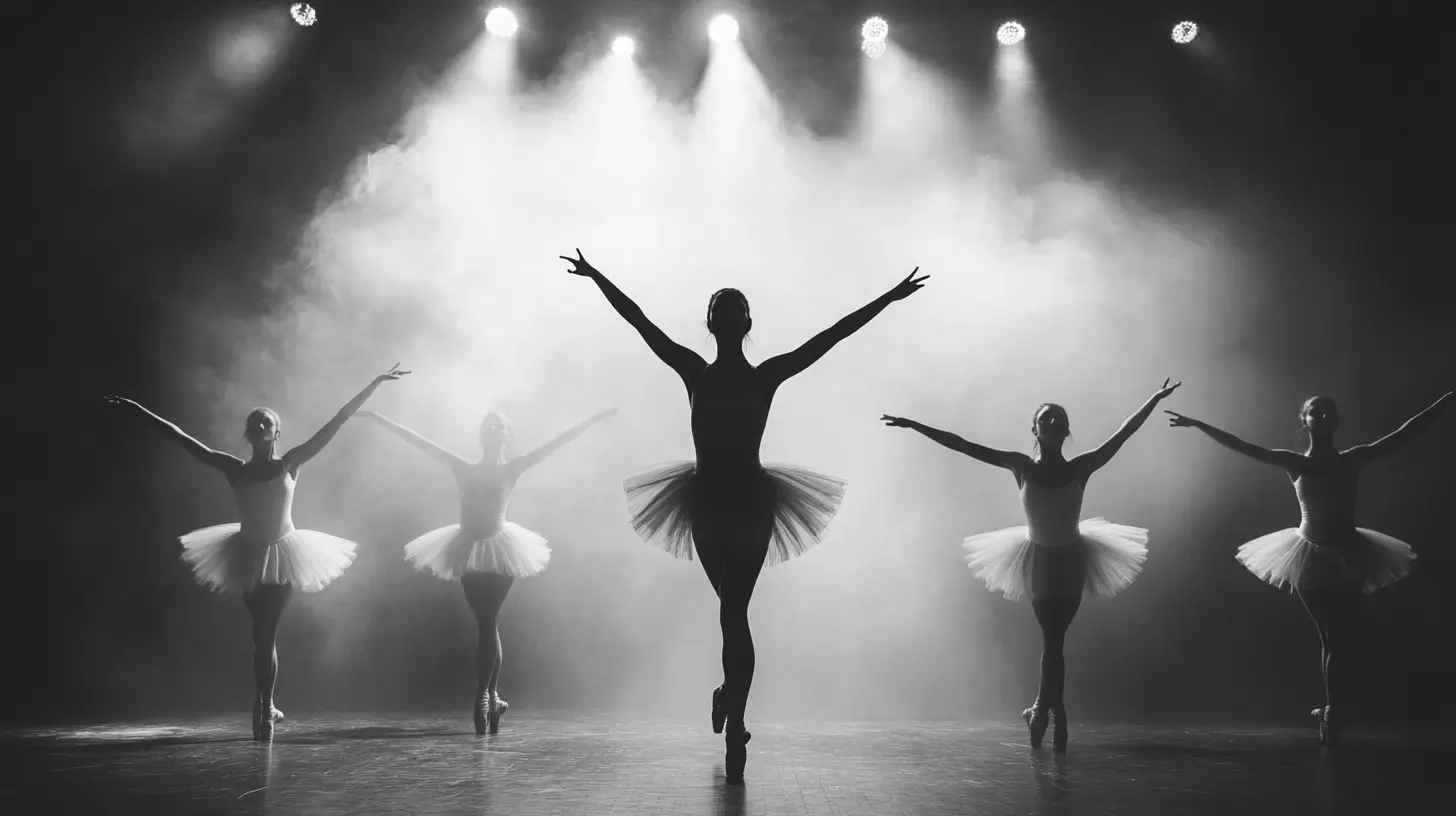
Ballet movements are built on five primary positions that every dancer must master. The first position, with heels together and toes pointed outward, is the starting point for many movements and is crucial for balance and alignment.
The second position, similar to the first but with heels hip-width apart, provides greater stability and is often used in barre exercises.
In the third position, one foot is placed in front of the other, with the heel of the front foot touching the arch of the back foot. Although the third position is less commonly used, it is a good starting point for transitioning between basic positions.
The fourth position places one foot a foot’s length, or one to two feet, in front of the other, with the toes pointing in opposite directions. This position is often used as preparation for turns and jumps.
In the fifth position, the toes of each foot are directly in front of the heel of the supporting foot of the other, with no gap in between. It provides a strong base for jumps and turns.
Adagio Movements
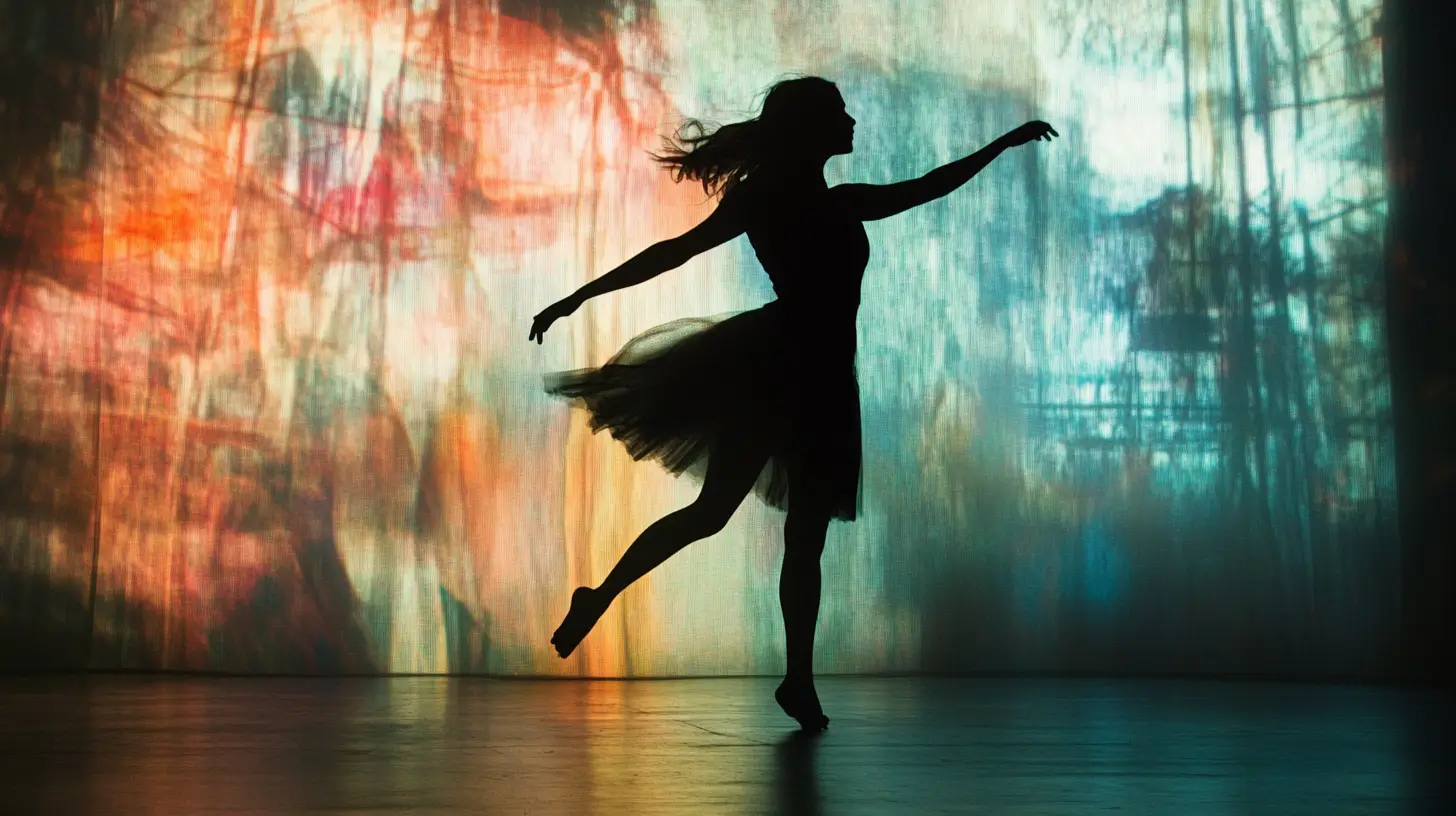
Adagio movements in ballet emphasize grace and control through slow, fluid exercises. These sequences, characterized by their gentle nature, allow dancers to focus on balance and control, often seen in classical pas de deux.
Adagio movements require balance and control. Dancers must keep their center of gravity steady, often incorporating arm positions and working leg moves to enhance fluidity. Pliés are fundamental, building leg strength and providing a stable foundation for complex techniques.
The attitude position, where one leg is lifted and bent, adds expression and elegance to adagio movements. These movements emphasize control and balance and are essential for developing the strength and poise required for advanced ballet techniques.
Allégro Techniques
Allégro focuses on speed and agility, requiring precision and energy. Quick footwork is crucial to maintaining momentum and executing rapid sequences effectively, demanding strong control and accuracy from dancers.
Allégro includes various jumps, emphasizing athleticism and artistry. The jumps range from small, quick movements to large leaps, like the grand jeté en avant, in which a dancer leaps forward with both legs extended. The timing of each jump synchronizes with the music, enhancing the performance.
The pas de bourrée couru is a series of small, rapid steps that give the illusion of floating across the stage. Typically performed in an allégro rhythm, it is used for traveling and often as a transitional step between turns, jumps, and arabesques.
Understanding Arabesque
The arabesque, known for its elegance and beauty, involves balancing on one leg while extending the straight leg and the other leg backward. This position creates a long, graceful, straight line up, showcasing strength and flexibility.
Various arabesque forms offer different visual effects, altering the aesthetic by emphasizing different lines and angles.
Whether performed à la seconde à terre, en l’air, or not à la seconde, terre, the arabesque is a fundamental ballet position celebrated for its timeless elegance and expressive potential.
Barre Exercises
Barre exercises are a cornerstone of ballet training. They offer the support and stability needed for proper technique. The barre helps dancers maintain balance while performing various exercises, which is essential for building the strength and control required for advanced movements.
Common barre exercises include pliés, which aid in graceful transitions and enhance performance, and relevés, which involve lifting onto the balls of the feet to improve stability and control. Proper alignment and posture are critical to avoid injury and maintain technique.
En Croix exercises, involving extended leg extensions in various directions, are frequently practiced at the barre to promote proper technique and body alignment, which are essential for executing complex ballet movements with precision and grace.
Battement Variations
Battement variations, which involve leg extensions and movements, are integral to ballet. The five main positions—first, second, third, fourth, and fifth—serve as the foundation, requiring hip rotation and turnout. Dancers often start battement movements from either the first or fifth position.
One common variation is the battement dégagé, in which the leg performs a quick flick while the front foot brushes the floor. Another is the grand battement, characterized by a large sweeping leg motion. These movements improve leg strength and flexibility, which are essential for advanced ballet techniques.
The battement tendu, where the foot remains in contact with the floor while extending the leg, is crucial for developing control and precision for complex ballet movements. Whether in demi-pointe sur la demi-pointe or en tournant, battement variations are fundamental to a dancer’s training and performance.
Changements and Jumps
Changements, characterized by a vertical leap from the first or fifth position with a quick mid-air foot shift, are a dynamic and exciting aspect of ballet. This jump requires precision and fast reflexes to change foot positions smoothly before landing.
The sauté, executed from and landing back on both feet, is another fundamental jump in ballet. It serves as the foundation for more complex jumps.
The jeté involves leaping from one foot and landing on the opposite foot, showcasing a different jump style compared to enhancements. These jumps highlight ballet’s athleticism and artistry, adding excitement and energy to performances.
Dancing En Pointe
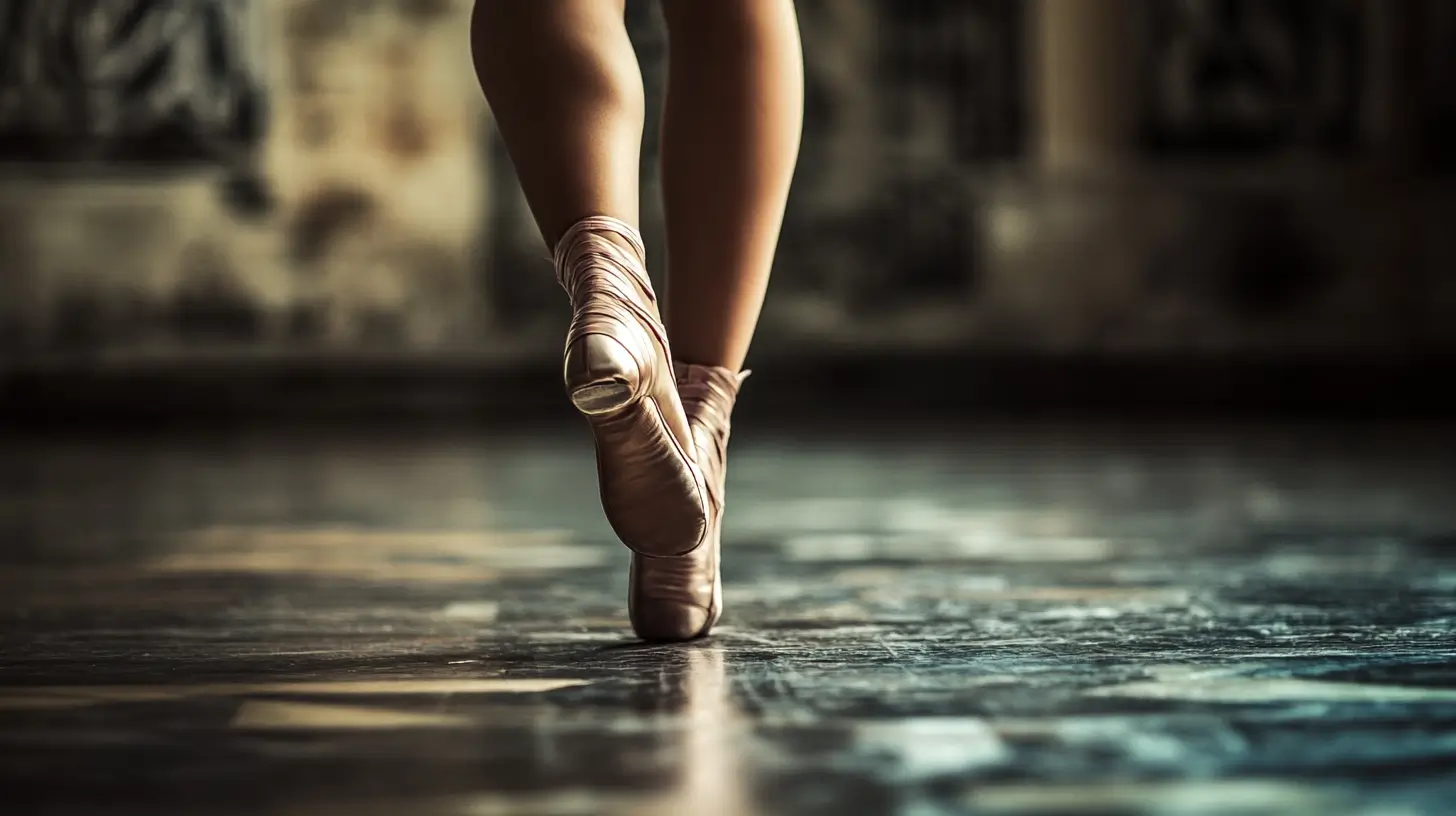
Dancing en pointe, one of ballet’s most challenging and beautiful aspects, involves performing on the tips of the toes (sur la pointe) with special satin pointe shoes that provide the necessary support and structure.
The strength and flexibility required for pointe work are developed through rigorous training and exercises. Battement variations enhance leg strength, which is essential for pointe work. Dancers also build muscles in their feet and ankles to maintain balance and control while performing en pointe.
Performing en pointe adds elegance and difficulty to ballet, making it a highly respected skill. Often seen in classical pas de deux, where the female dancer performs intricate movements on her toes, supported by her partner, this technique showcases ballet’s beauty and grace, creating a mesmerizing visual effect.
Pas de Deux Dynamics
The pas de deux, a highlight of classical ballet, involves a duet typically performed by a male and female dancer. Often seen as the pinnacle of ballet performance, it showcases the skills and artistry of both dancers, who perform individual parts before coming together for a finale.
In a pas de deux, the male dancer provides support and showcases the female dancer, often the central figure in ballet. This dynamic interaction requires trust and coordination, allowing for complex lifts and movements with grace and precision.
Pas de deux performances highlight the beauty of collaboration in ballet, showcasing the elegance and strength of both dancers. Their interaction creates a captivating visual experience, drawing the audience into the story and emotions conveyed through their movements.
Mastering Pirouettes
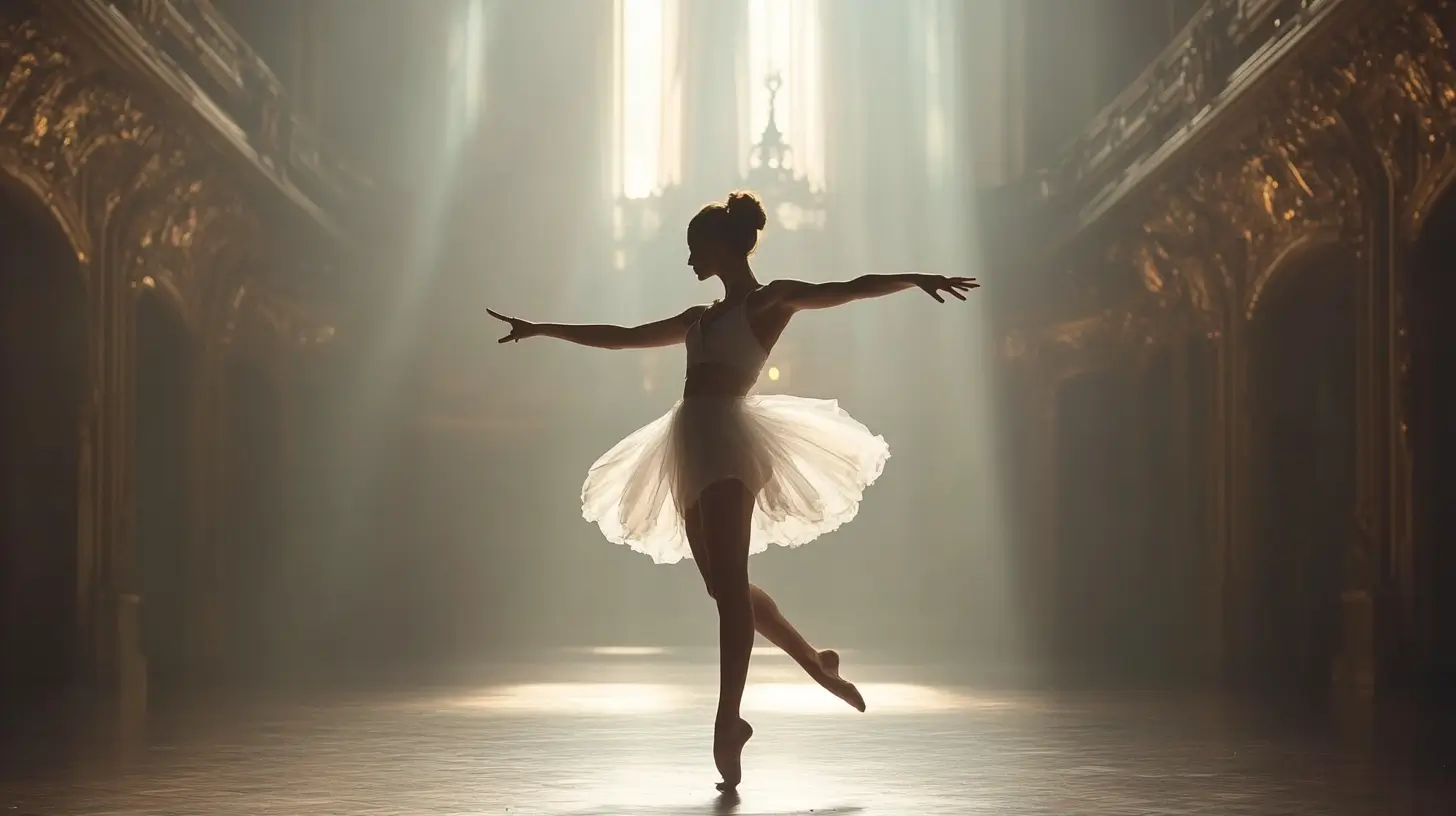
A pirouette, a 360-degree spin on one foot, is a fundamental ballet technique that requires balance and control. Typically, starting from the fourth or fifth position, the dancer pushes off from the back foot to initiate the turn. Core strength is crucial for maintaining balance and control.
Proper body alignment ensures stability and control during a pirouette. Dancers must keep their bodies straight and centered, using core muscles to maintain balance. Spotting, focusing on a fixed point while turning, is crucial for reducing dizziness and improving balance.
During the pirouette, dancers bring their legs into a tight passé position, with the foot placed near the knee of the supporting leg, facilitating a smooth and controlled turn. Mastering pirouettes requires practice and precision, adding elegance and fluidity to ballet performances.
Plié Fundamentals
Plié means “bent” or “bending. ” It is a fundamental movement in ballet that provides stability and fluidity. There are two primary types: demi-plié, which involves a slight bending of the knees with heels on the floor, forming a diamond shape, and is essential for building leg strength and flexibility, and grand plié.
A grand plié involves a deeper knee bend, with heels lifting off the floor in all positions except the second. This movement requires greater strength and control, providing a solid foundation for jumps and turns. Practicing pliés enhances movements such as assemblés by improving leg strength and flexibility.
Pliés are crucial in ballet training. They help dancers develop the strength and flexibility needed for complex movements. They also provide power for effective jumps and fluidity for smooth transitions between steps. Mastering plié fundamentals is essential for excelling in ballet.
Ronde de Jambe Movements
Rond de jambe, or “round of the left leg move,” involves making a circular path with one leg while the other remains stable. This leg is often referred to as the supporting leg. This movement can be executed on the ground (à terre) or in the air (en l’air), showcasing a dancer’s versatility. The leg traces a semi-circular path, either en dehors (outward) or en dedans (inward), emphasizing the fluidity and control of the hip movement.
Practicing ronde de jambe helps develop balance and strength in the feet and ankles, which are crucial for advanced ballet movements. This technique enhances dancers’ ability to maintain control and fluidity in their leg movements, making it a vital part of ballet training. Whether performed with the leg raised or on the ground, Ronde de jambe adds elegance and complexity to a dance sequence.
The circular movement also significantly improves coordination and flexibility, as the dancer must maintain a smooth, continuous motion throughout the circle. By consistently practicing ronde de jambe, dancers can achieve greater precision and grace in their performances, contributing to the overall aesthetic of their ballet technique.
Sauté Techniques
Sauté, meaning “jump” in French, is a fundamental ballet movement that involves jumping from various positions, such as first, second, or fifth, and landing back in the same starting position. Sautés are often used as warm-ups for larger jumps, helping dancers build the necessary strength and coordination for more complex movements. An example of a jump that incorporates sauté is the sauté arabesque, in which the dancer leaps while maintaining the arabesque position.
“Ballon” describes a dancer’s ability to appear light and buoyant during jumps, essential for executing sauté jumps effectively. Proper technique and landing are crucial to avoid injury and maintain the movement’s elegance.
By mastering sauté techniques, dancers can add a dynamic and energetic quality to their performances, captivating audiences with their lightness and agility.
Attitude Position
The attitude position in ballet involves lifting one leg with a bent knee, creating a striking and graceful pose. This position features one leg raised and the other leg bent at the knee, showcasing the dancer’s control and flexibility. There are variations of the attitude position, such as attitude devant (forward) and attitude derrière (backward), each offering a different visual effect.
In ballet, the leg can be lifted to the front, back, or side, with each variation affecting the overall appearance and emphasis. The supporting leg can be either straight or in a plié, which influences the aesthetics of the pose, including whether the extended or raised leg is used.
The attitude position is a favorite among dancers for its expressive potential and the elegance it brings to a performance where the dancer stands.
Assemblé Execution
The assemblé is a jump in which the dancer begins on one foot and lands simultaneously on both feet, adding variety to the ballet repertoire of jumps. This movement involves a leap in which one leg brushes the floor before both legs come together in the air. The landing should be soft and controlled, typically settling into a first or fifth position.
Proper arm placement during an assemblé is crucial to maintaining balance and enhancing the overall aesthetic of the movement. The height of the jump can vary depending on the dancer’s skill level and strength, allowing for different levels of complexity and visual impact.
Mastering the assemblé requires precision and practice, but it contributes significantly to a dancer’s ability to perform dynamic and engaging routines.
Glissade Steps
Glissade, meaning “to glide,” is a connecting step in ballet that involves a smooth sideward and downward movement of the foot, allowing the dancer to glide effortlessly across the stage. The execution of a glissade starts from a closed position, with the dancer sliding one foot out to the side while maintaining balance. This step often transitions between other movements, creating a seamless flow in a dance sequence.
Precision in foot placement during a glissade is crucial, as it contributes to the overall elegance and control of the performance. Practicing glissade helps dancers improve their coordination and ability to move fluidly across the stage, enhancing the grace and continuity of their movements.
This simple step is essential for achieving a polished and professional ballet class performance.
Port de Bras Movements
Port de bras, meaning “carriage of the arms,” encompasses both arm movements and specific exercises to enhance these movements in ballet. The overall grace of port de bras is significantly influenced by the dancer’s head and shoulder positioning, known as épaulement. Proper arm coordination is essential for balance and aesthetics, particularly in complex movements like pirouettes.
Incorporating port de bras into a dancer’s routine helps develop fluidity and elegance in their arm movements, contributing to the overall artistry of their performance. By practicing port de bras, dancers can achieve greater expressiveness and refinement, thereby enhancing the visual and emotional impact of their ballet routines.
Relevé Technique
Relevé, meaning “raised legs straight up,” involves lifting the body onto the balls of the feet or toes, creating an elegant posture. This movement can be performed on either one or both feet, emphasizing balance and control. Balance exercises like relevés enhance a dancer’s ability to perform complex movements such as pirouettes.
Relevé is fundamental to many ballet techniques, providing the strength and stability needed for advanced movements. Whether performed on pointe, demi-pointe, or pointe, relevé requires proper alignment and muscle engagement to maintain the elevated position. Mastering this technique is essential for achieving the grace and poise characteristic of classical ballet.
Pas de Bourrée Variants
The pas de bourrée is a fundamental three-step movement in ballet that can be executed in various directions and concludes in either an open or closed position. Originating from French courtly dance, this step is essential for transitioning between movements and adding complexity to a dancer’s routine. For example, the piqué pas de bourrée involves lifting the toes to touch the floor during the movement, emphasizing elevation.
Another variant is the pas de bourrée couru, also known as the “running pas de valise bourrée,” performed on the toes in a crossed position. This step creates the illusion of gliding across the stage, adding fluidity and elegance to the performance. The pas de bourrée en tournant incorporates turning into the three-step movement, enhancing the dynamic quality of the dance.
Mastering the various pas de bourrée variants is crucial for any dancer, as these steps are frequently used in choreography to link movements and create seamless transitions. By practicing these steps, dancers can improve their coordination, agility, and overall performance quality.
Petit Jeté
The petit jeté is a small jump where the dancer springs from one foot to another, often starting from the coup de pied position. This jump emphasizes lightness and grace, creating an illusion of effortless flight. During a petit jeté, both legs must straighten in mid-air before landing on the opposite foot.
Proper execution of a petit jeté involves a plié before the jump and a smooth landing to maintain balance. This movement adds a dynamic and playful element to a dancer’s repertoire, showcasing their agility and control.
By mastering the petit jeté, dancers can enhance their performances with quick, light jumps that captivate the audience.
Tour en l’air
Tour en l’air, meaning “turn in the air,” is a ballet jump with multiple airborne rotations. It adds a dramatic flair to performances. Male dancers notably perform this movement, though female dancers can also master it with proper training. Common variations of tour en l’air include single, double, and triple tours, with advanced dancers adding embellishments.
Practicing tour en l’air enhances a dancer’s strength, balance, and overall performance quality. This movement requires precise timing and control, making it a challenging but rewarding addition to a dancer’s skill set.
By mastering tour en l’air, dancers can create stunning visual effects that leave a lasting impression on the audience.
En Croix Exercises
En Croix exercises involve movements executed in a cross pattern, typically transitioning through front, side, and back positions. “En Croix” translates to “in the shape of a cross,” reflecting the movements’ pattern. These exercises help dancers develop strength and coordination by addressing multiple angles and directions.
En Croix is often incorporated into tendu and battement routines to enhance fluidity and control. These exercises are essential for developing coordination and strength, as they require dancers to execute steps in multiple directions.
By practicing en croix exercises, dancers can achieve greater precision and versatility in their movements, contributing to a well-rounded ballet technique.
Sur le Cou-de-Pied
Sur le coup-de-pied is a ballet position in which the dancer places the working foot on the ankle of the standing, supporting leg. The term “sur le cou-de-pied” translates to “on the neck of the supporting leg straightens the foot,” referring to the area from the calf to the mid-foot of the supporting leg. This position can be executed in various orientations, such as front, back, or side, affecting the overall aesthetic of the movement.
In this position, the working leg and foot are always fully extended and should not be wrapped around the supporting knee. Maintaining active turnout in both legs and ensuring the heel of the working leg and foot are properly positioned are crucial.
Sur le cou-de-pied is significant for developing balance and control in ballet techniques, making it a vital part of a dancer’s training.
En Dehors and En Dedans
En dehors refers to movements that circle the leg outward, while en dedans involves inward, leg-extended circles. These terms are essential for understanding the direction of leg movements in ballet. Leg bent leg circle,s performed en dehor,s move away from the body, whereas leg extended circles,ese done en ded,ans move towards it.
These movements are fundamental to many ballet techniques, helping dancers develop a sense of direction and control in their leg movements. By mastering en dehors and en dedans, dancers can improve their ability to perform complex sequences with precision and agility.
Pas de Chat
The pas de chat, or “step of the cat,” is characterized by a springy leap where the dancer begins in the fifth position, raising one leg through retiré. At the same time, the other pushes off the ground. “Pas de chat” translates to “cat’s step,” describing a leap performed by drawing up the feet and bending the knees to create a diamond shape in the air.
In the pas de chat, the front leg lands first, followed by the second leg and back foot to complete the movement in the fifth position. This jump is noted for its delicate, bouncy quality, reminiscent of a cat’s jump.
Mastering pas de chat adds a playful and dynamic element to a dancer’s repertoire, enhancing the visual appeal of their performance.
Classical Ballet Terms
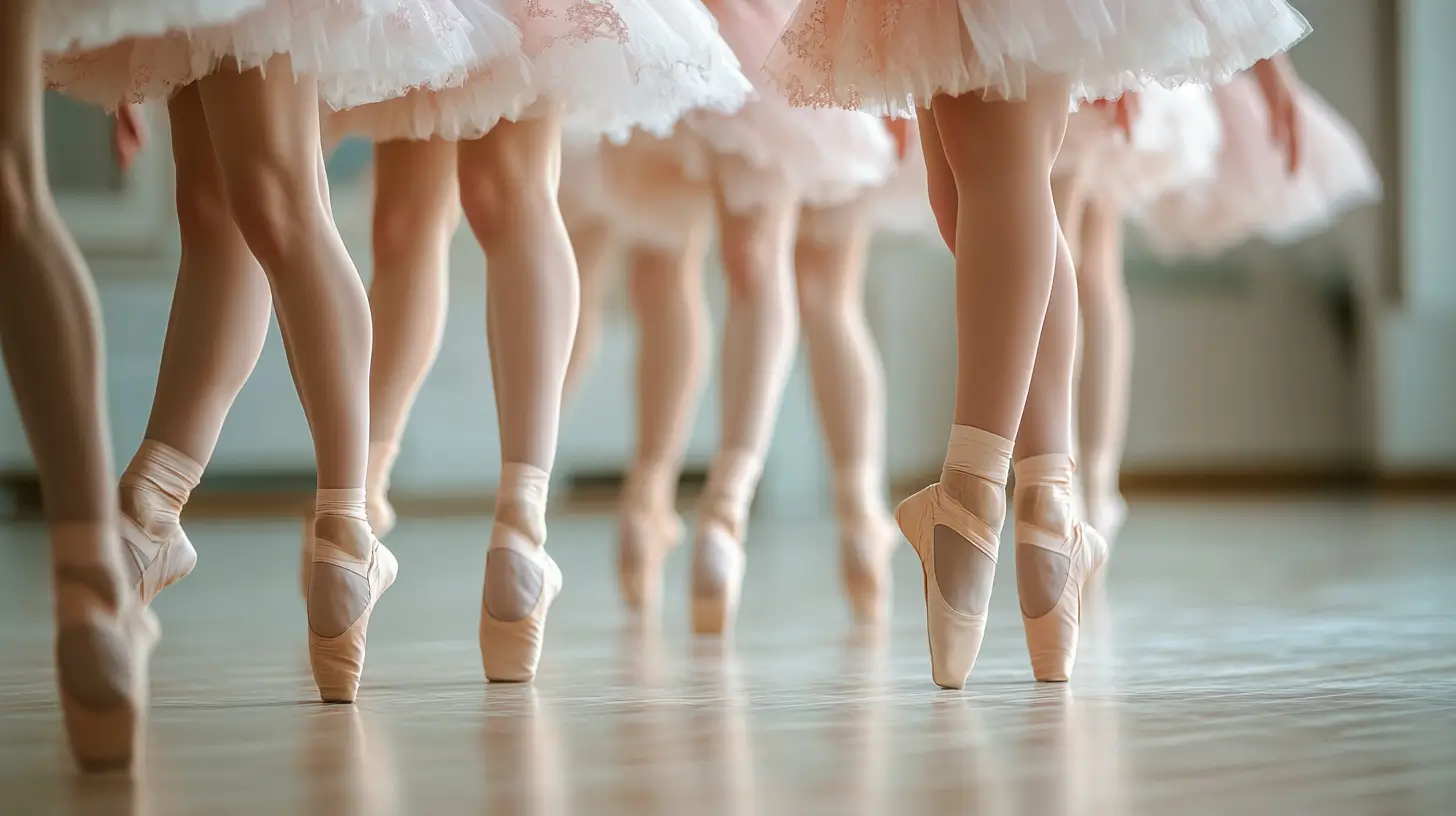
Understanding classical ballet terms is essential for any dancer looking to master the art form. The corps de ballet refers to dancers who perform as a group, distinguishing them from soloists and principal dancers. These dancers are crucial in creating visual and narrative elements of a ballet performance.
The coryphée is a rank in ballet that designates a leader of the corps de ballet, acting as a senior male dancer’s step and often taking on more prominent roles. Knowing these terms helps dancers understand the structure and hierarchy within a ballet company, which in turn contributes to their overall knowledge and appreciation of the art form.
| Term | Definition | Pronunciation | Category |
|---|---|---|---|
| Adagio | Slow, controlled movements are often performed with fluid grace, focusing on balance and extension. | ah-dah-zhee-oh | Movements |
| Allegro | Brisk, lively movements that include jumps, turns, and fast footwork. | ah-leh-GROH | Movements |
| Arabesque | One leg is extended straight behind the body, the supporting leg is straight or bent, and the arms are in various positions. | ah-rah-BESK | Positions |
| Assemblé | A jump from one foot, landing on both feet, where the legs join in the air. | ah-sahm-BLAY | Jumps |
| Attitude | A position on one leg with the other leg lifted in the front, side, or back and bent at the knee. | ah-tee-TEWD | Positions |
| Balancé | A rocking step, shifting weight from one foot to another, is often performed in ¾ time. | bah-lahn-SAY | Steps |
| Balletomane | An enthusiast or devotee of ballet. | bah-lay-toh-mahn | Miscellaneous |
| Battement | A beating movement of the legs. It can be executed as a small, sharp action (petit) or a large, grand movement (grand battement). | bat-MAHN | Movements |
| Chaînés | A series of rapid, traveling turns performed on demi-pointe. | sheh-NAY | Turns |
| Changement | A jump in which the dancer changes the position of their feet in mid-air. | shahnzh-MAHN | Jumps |
| Croisé | A position where the dancer stands at an angle to the audience, with the legs crossed. | krwah-ZAY | Positions |
| Dégagé | To disengage. A movement where the working leg lifts off the floor after a tendu. | day-gah-ZHAY | Movements |
| Demi-Plié | A small bend of the knees, keeping the heels on the ground. | duh-MEE plee-AY | Movements |
| En Pointe | Dancing on the tips of the toes in specially reinforced shoes. | awn pwant | Techniques |
| Fondu | The body is lowered by bending the knee of the supporting leg. | fawn-DEW | Movements |
| Fouetté | A whipping motion of the working leg. Often performed in turns (fouetté turns), the dancer’s leg whips around while turning on the supporting leg. | foo-eh-TAY | Turns |
| Glissade | A gliding step where the dancer slides one foot along the floor. | glees-AHD | Movements |
| Grand Jeté | A large jump where the dancer leaps into the air with legs extended in a split. | grahn zhuh-TAY | Jumps |
| Pas de Deux | It is a dance for two performers, traditionally a male and female dancer. | pah duh DEUH | Performance Terms |
| Pirouette | A turn is performed on one leg, either en dehors (outward) or en dedans (inward). | peer-WET | Turns |
| Plié | A bending of the knees, either a small bend (demi-plié) or a full bend (grand plié). | plee-AY | Movements |
| Port de Bras | The movement or positioning of the arms. | por duh BRAH | Arm Movements |
| Relevé | A rising onto the balls of the feet (on demi-pointe) or full pointe from a plié. | reh-leh-VAY | Movements |
| Rond de Jambe | A circular leg movement on the ground (à terre) or in the air (en l’air). | rahn duh ZHAHM | Movements |
| Sauté | A jump from two feet to two feet. It can also be used to describe a small jump. | soh-TAY | Jumps |
| Tendu | A movement where the working leg is stretched, and the foot stays connected to the floor. | tahn-DEW | Movements |
| Tour en l’air | A complete turn in the air, typically performed by male dancers. | toor ahn LAIR | Turns |
Resume
Ballet terminology is the foundation of understanding and mastering this beautiful art form. From basic positions to advanced techniques, each term and movement contributes to the ballet’s elegance and precision.
